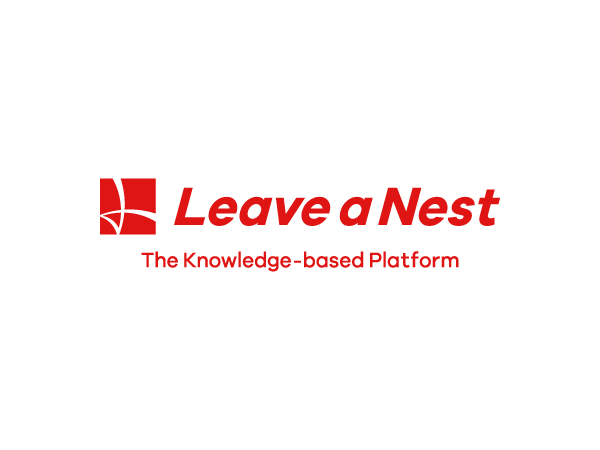Science Castle 2022 Kansai Conference
| Event Name | Science Castle 2022 Kansai Conference |
|---|---|
| schedule | Sunday, January 29, 2023 9:45-18:00 |
| Location | Osaka Meisei Junior and Senior High School Access |
→directional marker or indicator Science Castle 2024 Kansai Conference
The manual will be updated from time to time. We will contact you by e-mail when major changes are made, but we will not contact you for minor modifications; please check the manual on your own.
Update Information
- Nov. 1 Open to the public
Audience wanted!
The conference is open to middle and high school students, middle and high school teachers, researchers, business people, and the general public for auditing.Advance application is required.will be.
We will not set a deadline for advance application, though,Applications will be closed when the venue reaches capacity.Please apply as soon as possible.
All co-researchers and faculty members other than the presenting principal investigator must also apply in advance.
To register, you will need to register your LIVERNESS ID.
What is LIVERNESS ID?https://id.lne.st/whatis
New registration for Liverness IDhttps://id.lne.st/pre_regist
Download Abstracts (Kyushu and Kansai Conferences)
You can download the abstract book here. Please use it not only for auditing but also for your research activities in the following year.
Oral Presentation
O-01
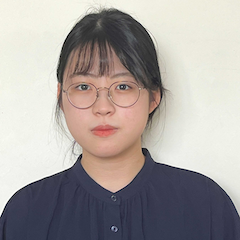
Shinki Yoshimura (Ritsumeikan Senior High School)
Devising more effective artificial reef shapes
O-02
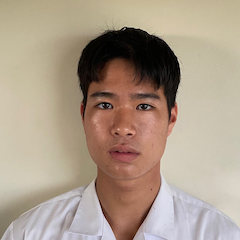
Tatsuo Nishimoto (Hiroshima Prefectural Saijo Agricultural High School)
Study on Effective Utilization in the Fruits of Plectranthus chinensis
O-03
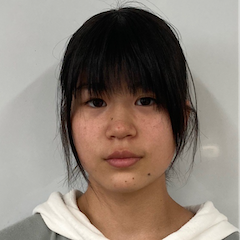
Kyoka Matsuo (Osaka Prefectural Tondabayashi High School)
Natural Purification Mechanisms Considered from the Flow of Rivers
O-04

Sosuke Furuyama (Gifu Prefectural Yaotsu High School)
Microplastics found in mountain reservoir
O-05
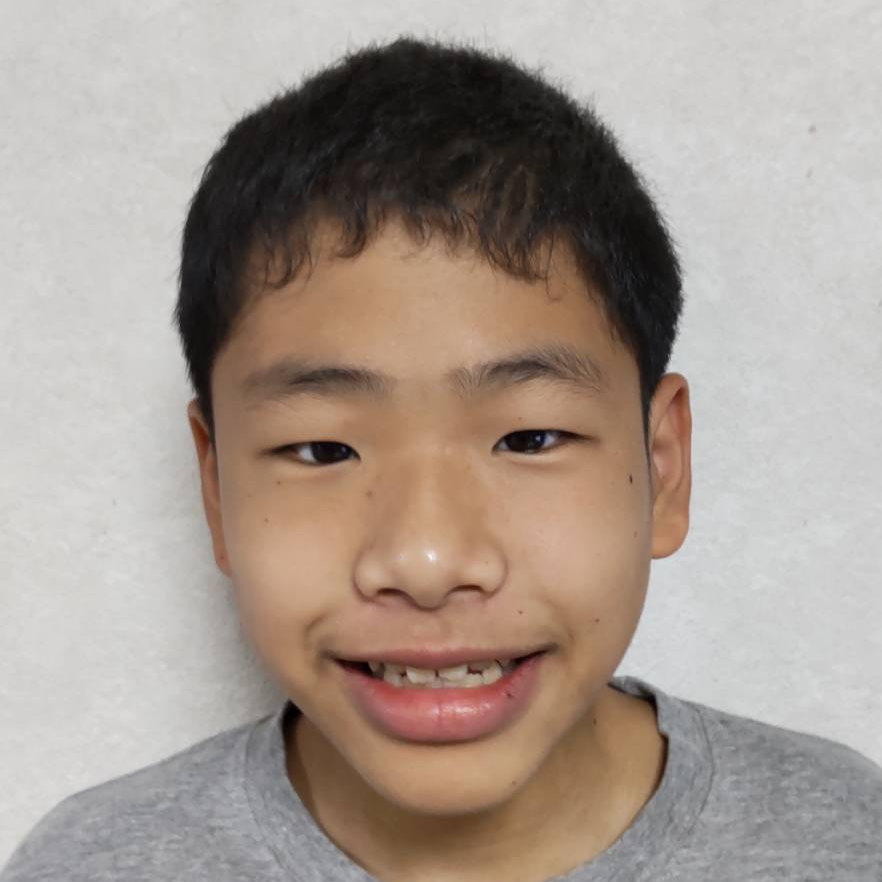
Rei-Wan Matsuo (Miyahara Junior High School, Osaka)
Research on an inexpensive underwater drone that can accurately measure water depth based on image data
O-06
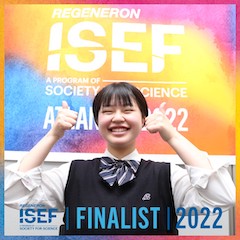
Yuka Kishi (Otsuma Arashiyama High School)
Alchemist's dream improvement Method using aluminum foil and surfactant
O-07
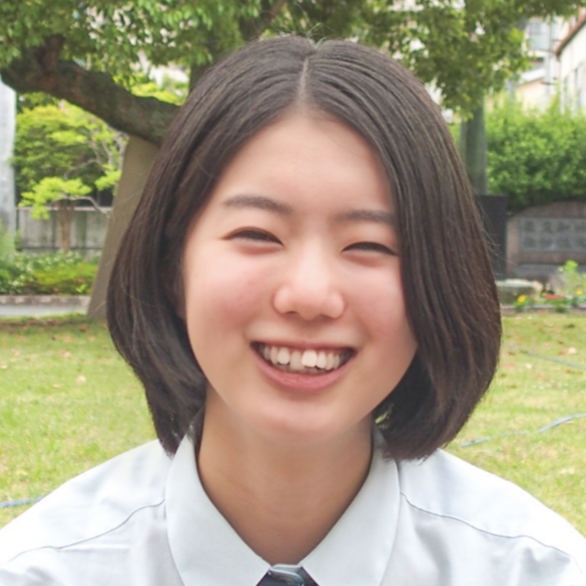
Sakira Nakagawa (Nara Prefectural Seisho High School)
Chlorophyll Increase in Yamatomana by Hot Water Treatment
O-08
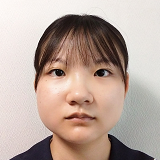
Ririka Yamamoto (Osaka Prefectural Tondabayashi High School)
Unusual behavior of the tairikubara tanago in response to red coloration.
O-09

Takae Sugihara (Notre Dame Jogakuin High School)
Can milk be used to make better plastic everyday items?
O-10
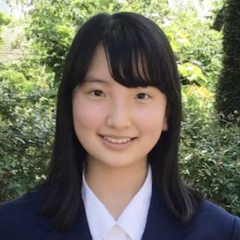
Noena Kato (Karan Girls' High School)
Material production by bio-utilization of algae -Exploring the possibility of developing fiber products capable of photosynthesis
O-11
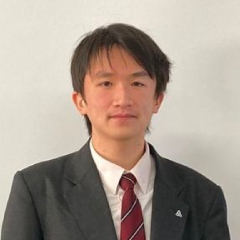
Haru Arai (Kyoto Prefectural Momoyama High School)
Development of the Twisted Darius Wind Turbine
O-12
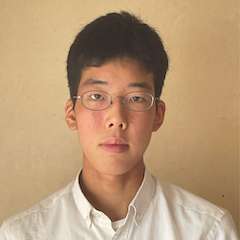
Keido Iida (Seifu High School)
Two cyanobacterial growth inhibitory effects of reeds: Verification using Microcystis aeruginosa
Schedule for the day
| Venue | Main Venue |
Poster Room | Planning venue |
| 9:00 | inauguration | inauguration | – |
| 9:45 | opening ceremony (Opening remarks and introduction of partners) |
||
| 10:05 | keynote speech | ||
| 10:30 | <Oral Presentation Introduction of Oral Presentation Judges Oral Presentations O-01 to 04 Oral Presentations O-05 to 08 Oral Presentations O-09-12 |
||
| 13:35 | lunch break | ||
| 14:15 | First half of poster, odd number | ||
| 15:05 | Second half of poster, even number | ||
| 16:05 | special project | special project | |
| 17:05 | Awards Ceremony and Closing Ceremony | ||
| 18:00 | end |

Shuichiro Takahashi Head of Jury
Doctor of Life Sciences
Representative Director, President and COO, Liverness, Inc.
D. from the Graduate School of Frontier Sciences, The University of Tokyo. Founding member of RIVANESS. He established the research institute of RIVANESS and built the foundation of its research support and R&D business. He has devised unique business models such as "RIVANESS Research Fund" and "L-RAD," a platform for unused research ideas, and has led many projects involving industry, academia, and education.
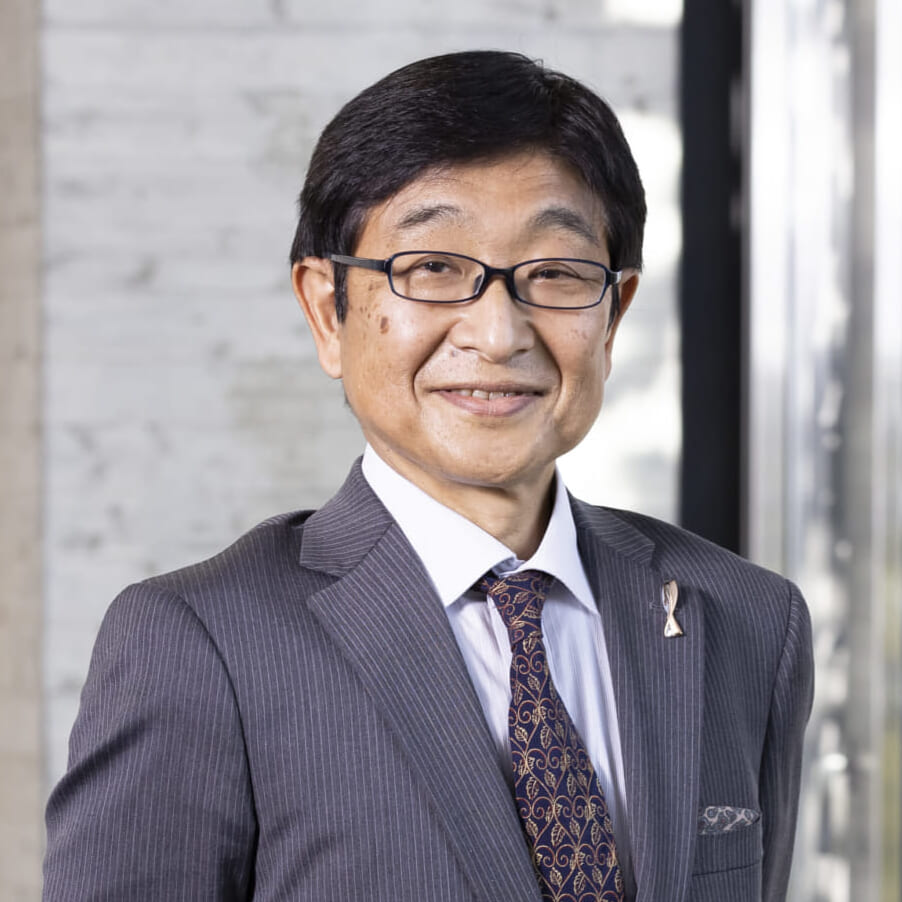
Susumu Maruno
Doctor of Engineering
Otemon Gakuin University Faculty of Psychology Department of Psychology Artificial Intelligence and Cognitive Science Professor
Joined Matsushita Electric Industrial Co. (now Panasonic Corporation) in 1978, and engaged in neurophysiology and AI research as a visiting scientific researcher at the University of Utah Medical Center in the U.S. from 1987 to 1989. In 2016, he was appointed as Director of RDMM Support Center, Kansai Science City Promotion Organization, and in 2021 he will assume his current position. His areas of expertise include intelligent information processing, image and video media processing, and neuro-AI.
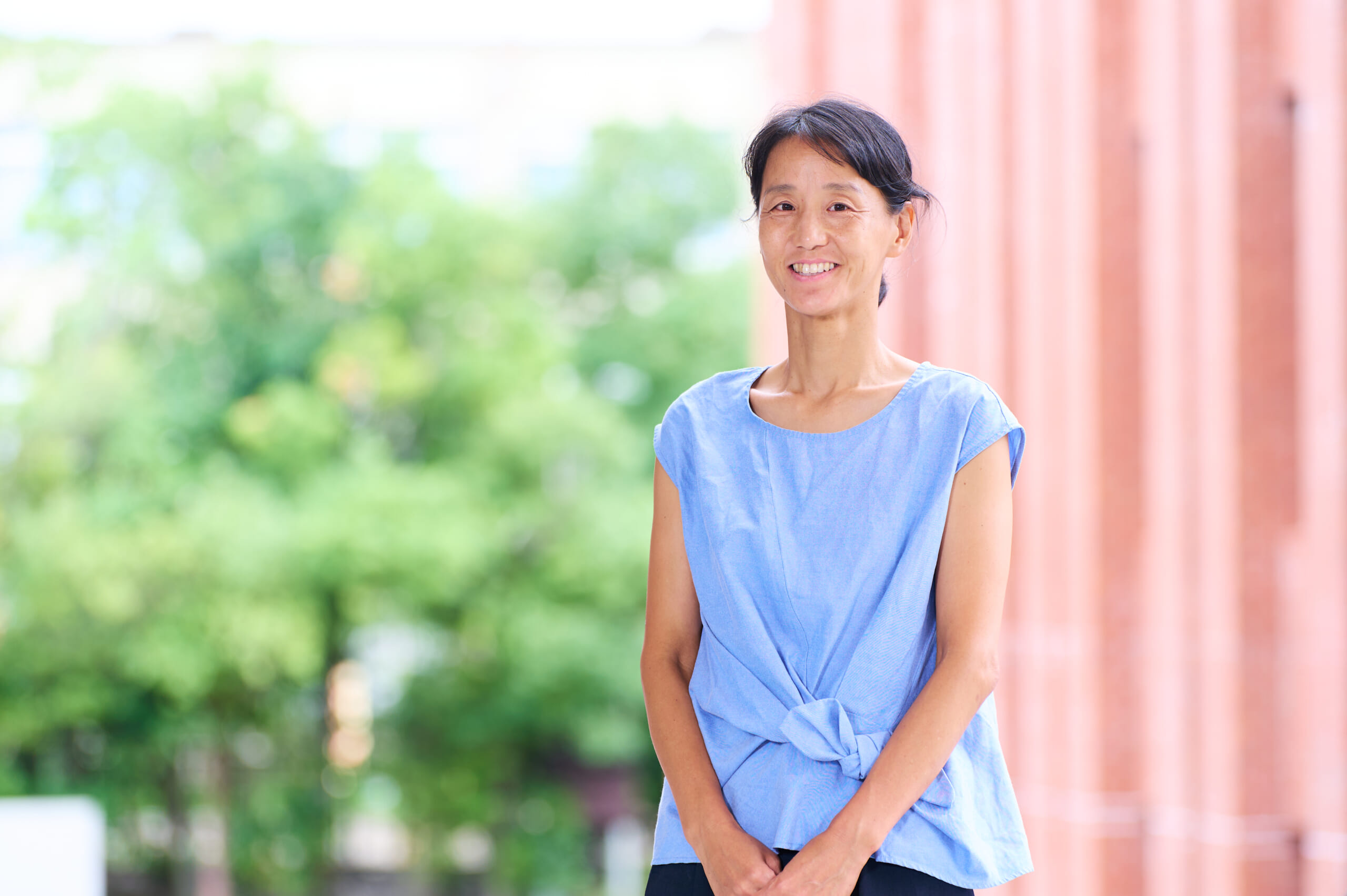
Kaori Shiojiri
Doctor of Agriculture
Professor, Faculty of Agriculture, Ryukoku University
D. in Agriculture. D. in Agriculture from the Faculty of Agriculture, Hokkaido University and the Graduate School of Agriculture, Kyoto University. After working as a JSPS Postdoctoral Fellowship for Research Abroad (UC Davis), JSPS Research Fellowship (Center for Ecological Research, Kyoto University), and Assistant Professor at the Hakubi Center, Kyoto University, he has been in his current position since 2015. She has received the Encouragement Award from the Japanese Society of Applied Zoology and Entomology, the Japanese Society for the Advancement of Agricultural Science, the Miyachi Award from the Ecological Society of Japan, the Tachibana Award for Women Researchers at Kyoto University, and the Morita Award from the Association of University Women. Since her student days, she has been interested in the relationship between plants and insects, and has continued her research, focusing on the relationship through "kaori", after which she is named.
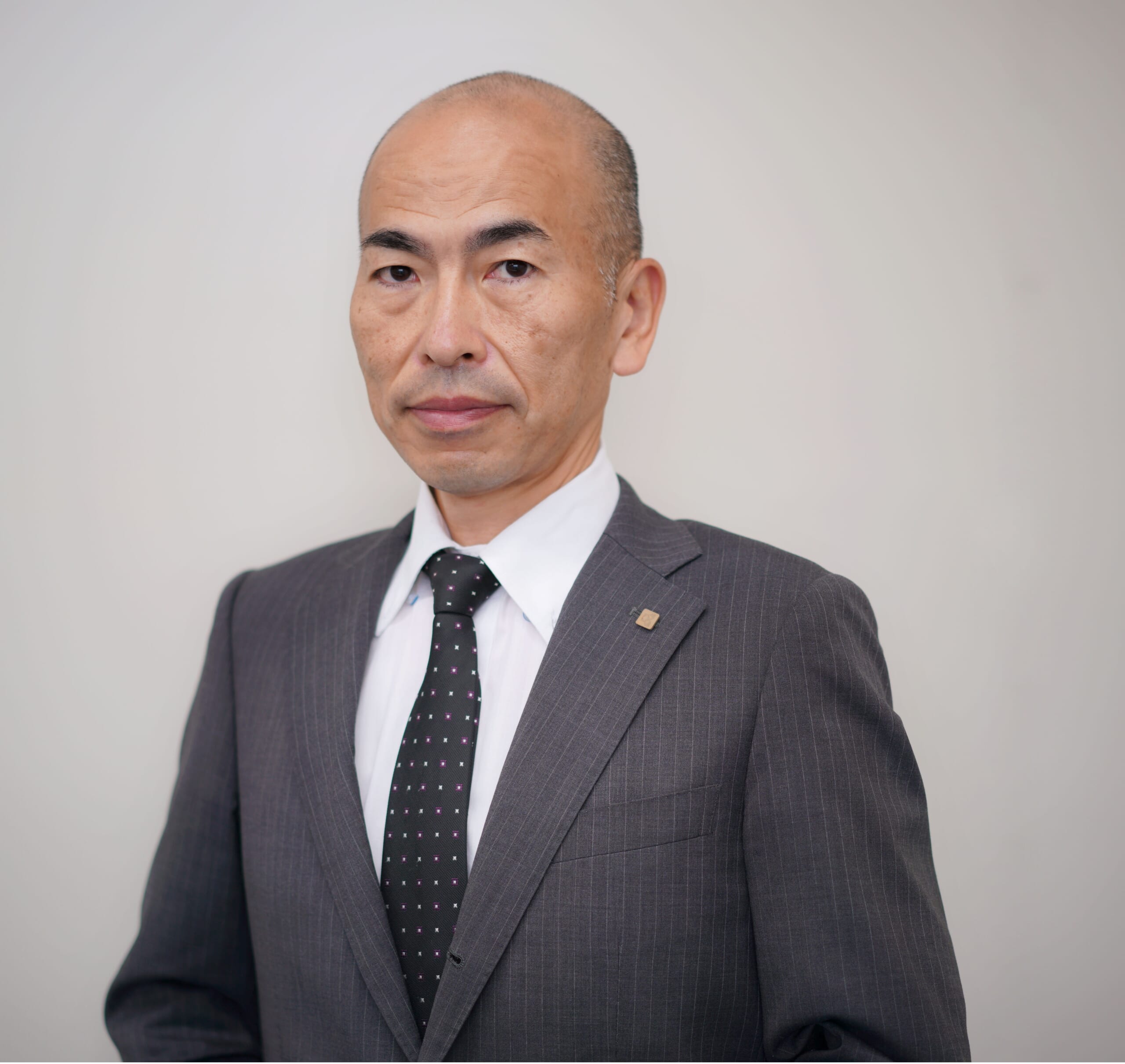
Masajune Marubayashi
Doctor of Engineering
General Manager, Medical Development Center and General Manager, Social Implementation Development Center, Device R&D Management Division, R&D Headquarters, Kyocera Corporation
In 1996, he completed his master's degree in engineering at Kyushu University and joined Kyocera Corporation in the same year, where he was in charge of artificial bone design and manufacturing technology. After the business integration with Kyocera Corporation in 2017, he promoted the development of biomaterials, biomedical sensing, and healthcare systems at the Medical Development Center, which was established in the same year, and became the head of the Medical Development Center in 2020. From 2022, he will concurrently serve as Director of the Social Implementation Development Center, where he will promote new businesses.
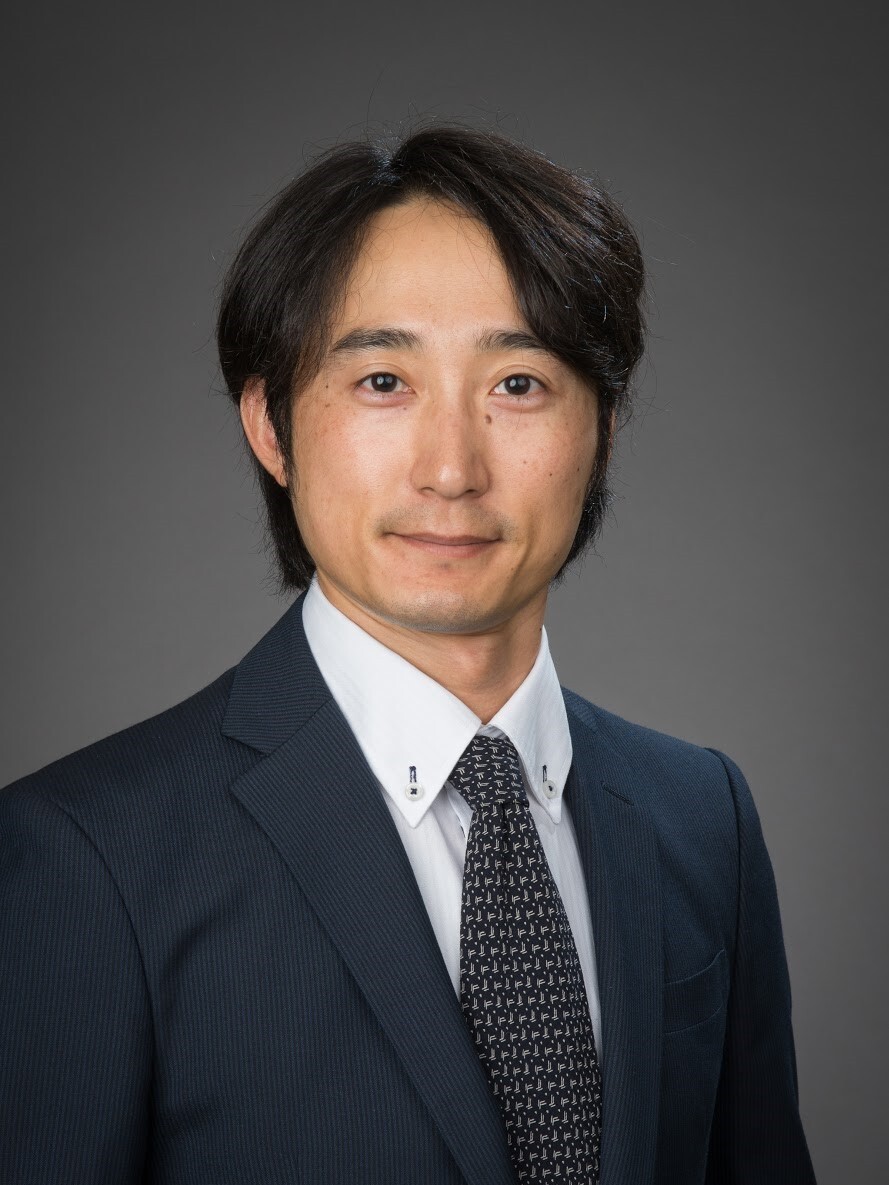
Ikuo Hayashi
Doctor of Pharmacy
Alliance Manager, Open Innovation Center, Bayer Yakuhin K.K.
D. in Biopharmacy from the Graduate School of Pharmaceutical Sciences, The University of Tokyo.
Graduated from University of California San Diego, Rady School of Management (MBA).
After working as a researcher for domestic and international pharmaceutical companies, his main activities in his current position are fostering drug discovery innovation ecosystems, supporting drug discovery startups, and collaborating with academia.
| No. | subject of an address | PI | belong to |
| O-001 | Devising more effective artificial reef shapes | Shinki Yoshimura | Ritsumeikan Senior High School |
| O-002 | Study on Effective Utilization in the Fruits of Plectranthus chinensis | Tatsuo Nishimoto | Hiroshima Prefectural Saijo Agricultural High School |
| O-003 | Natural Purification Mechanisms Considered from the Flow of Rivers | Kyoka Matsuo | Osaka Prefectural Tondabayashi High School |
| O-004 | Microplastics found in mountain reservoir | Sosuke Furuyama | Gifu Prefectural Yaotsu High School |
| O-005 | Research on an inexpensive underwater drone that can accurately measure water depth based on image data | Rei-Wan Matsuo | Osaka City Miyahara Junior High School |
| O-006 | Alchemist's dream improvement Method using aluminum foil and surfactant | Yuka Kishi | Otsuma Arashiyama Senior High School |
| O-007 | Chlorophyll Increase in Yamatomana by Hot Water Treatment | Sakira Nakagawa | Nara Prefectural Seisho High School |
| O-008 | Unusual behavior of the tairikubara tanago in response to red coloration. | Ririka Yamamoto | Osaka Prefectural Tondabayashi High School |
| O-009 | Can milk be used to make better plastic everyday items? | Takae Sugihara | Notre Dame Jogakuin High School |
| O-010 | Material production by bio-utilization of algae -Exploring the possibility of developing fiber products capable of photosynthesis | Noena Kato | Koran Girls' High School |
| O-011 | Development of the Twisted Darius Wind Turbine | Haru Arai | Kyoto Prefectural Momoyama High School |
| O-012 | Two cyanobacterial growth inhibitory effects of reeds: Verification using Microcystis aeruginosa | Iida, Keido | Seifu High School |
| P-101 | Electrode Fabrication from Plum Seed Charcoal! Toward Fuel Cell Applications | Kouki Hori | Wakayama National College of Technology |
| P-102 | Cosmic ray observation at Mt. | Yuto Taira | Kaisei High School |
| P-103 | Relationship between iodate ion concentration and reaction time in the clock reaction | Takagi Kohzumi | Showa High School Attached to Showa Women's University |
| P-104 | Toward the Practical Application of Plastics Made from Whey Protein | Sou Dai Imai | Sapporo Kaisei Secondary School |
| P-105 | Can Millworms Solve the Marine Plastic Waste Problem? | Yuko Tsuji | Osaka Prefectural Kaizuka Minami High School |
| P-106. | Plastic alternatives | Yusho Kobayashi | Fukui Prefectural Wakasa High School |
| P-107. | Swimming ability of medaka fish against backflow | Renta Saito | Toyo University Himeji High School |
| P-108 | How to erase an eraser without breaking it. | Shuka Yoshimura | Wakasa High School |
| P-109 | Relationship between vocal communication and behavior of crows in the Momoyama Hills area. | Peach Blossom | Kyoto Prefectural Momoyama High School |
| P-110 | Synthesis of biodegradable plastics using mulberry | Shunya Kawada | Kobe Municipal High School of Science and Technology |
| P-111 | Development of evacuation routes that can be learned visually and simulatively | Saisho Egawa | Wakayama National College of Technology, Independent Administrative Institution National Institution of Technology Wakayama National College of Technology |
| P-112 | Impact of Acid Rain on the Environment | Youya Sugimoto | Sakuragaoka High School |
| P-113 | Effect of sound on fermentation of pickles | Aoi Fujimoto | Fukui Prefectural Wakasa High School |
| P-114. | Development of the safest and fastest nitrobenzene reductant in high schools | M. Ishimoto | Kanagawa Gakuen High School |
| P-115. | Efficient excretion in the aquarium | Kazuhi Fukumoto | Wakasa High School |
| P-116. | Yagano's stone wall stones as seen through arrow hole stones | Takumi Fukuda | Kyoto Prefectural Momoyama High School |
| P-117. | Vibration power generation | Yuto Obara | Wakasa High School |
| P-118 | Ecological Survey of Wando near Shodoshima Island, Kino River | Yamaki, D. | Wakayama Koyo Senior High School |
| P-119. | Preparation of Dye-Sensitized Solar Cells with Gelatinized Solution | Eina Tanaka | Sakuragaoka High School |
| P-120 | Increasing the total polyphenol content of Yamato-manna by irradiating light | Daichi Tsujimoto | Nara Prefectural Seisho High School |
| P-121 | Trial of ink production by extraction of flower pigments | Reona Nakamura | Kyoto Koka High School |
| P-122 | Wand Microorganisms | Haruka Okada | Jyoshogakuen High School |
| P-123 | Reuse of Fish Scales - Creation of Fertilizer Using Scales | Ei Kamikita | Fukui Prefectural Wakasa High School |
| P-124 | How Catalase Affects Hair | Karina Nishikawa | Jyoshogakuen High School |
| P-125 | Simplification of fish transparent skeletal specimen preparation and understanding of biochemical principles | Yohka Hase | Kyoto Prefectural Kamoyi High School |
| P-126 | Differences in killifish ecology between seawater and freshwater | Yuto Shibata | Toyo University Himeji High School |
| P-127 | Reproduction of Kyoto Higashiyama mountain range by sand hill experiment using contour lines | Takane Aruga | Higashiyama Junior High School |
| P-128 | Research on Mushroom Cultivation with Rice Husk Mycorrhizal Beds | Hiroki Kobayakawa | Hiroshima Prefectural Saijo Agricultural High School |
| P-129 | Heat island study around Momoyama High School | Sasahiro Sakamoto | Kyoto Prefectural Momoyama High School |
| P-130 | Carbon dioxide content and its utilization by marine yeast | Mariko Taguchi | Seishin Girls' High School |
| P-131 | Antioxidants in Fruits Over Time | Kumi Ryu Fukui | Jyoshogakuen High School |
| P-132 | Efficient way of fanning | Waka Kitao | Takatsuki Junior High School |
| P-133 | Learning from the American Crayfish SDGs II | Hinata Ando | Gifu Prefectural Yaotsu High School |
| P-134 | Soap Bubble Endurance Time ~Near the Limit of Surface Tension~. | Aya Hirao | Jyoshogakuen High School |
| P-135 | Evaluation Methods for Hair with Silicones | Aiho Kawai | Nishiyamato Gakuen High School |
| P-136 | New Skewb's solution method | Yusei Miura | Kyoto Prefectural Momoyama High School |
| P-137 | Consideration of conditions for removing fingerprints | Maayu Yoshida | Jyoshogakuen High School |
| P-138 | Research on softening of gibier by fruit juice, etc. | Miyu Sentani | Hiroshima Prefectural Saijo Agricultural High School |
| P-139 | Life Force of Weeds | Natsuki Shikata | Osaka Private Jyoshogakuen High School |
| P-140 | How can I promote the growth of bean sprouts? | Ami Ichihara | Seishin Girls' High School |
| P-141 | Feeding habits and preferences of sowbugs | Yuka Kinoshita | Jyoshogakuen High School |
| P-142 | Antioxidant effects of flower myoga and its effect on photoinhibition | Ayaka Hachiya | Nishiyamato Gakuen High School |
| P-143 | Biomaterials of biological threads | Tomoki Usuyama | Jyoshogakuen High School |
| P-144 | Relation between sunset and weather | Chenshi Nakano | Wakasa High School |
| P-145 | Effect of plasma irradiation on pollen tube elongation | Akiho Tsuruta | Jyoshogakuen High School |
| P-146 | Relationship between submerged bioconversion and salinity of Dokudami | Keisuke Nakatani | Toyo University Himeji High School |
| P-147 | Analysis of Blade Texture Organization of Japanese Swords | Kuriyama, Sakura | Jyoshogakuen High School |
| P-148 | Conditions for the occurrence of dilatancy phenomena | Kenji Yamamura | Ritsumeikan Senior High School |
| P-149 | Artificial blood vessels that prevent the formation of blood clots | Kyoka Yokoyama | Jyoshogakuen High School |
| P-150 | Impact of plastics on the ocean and recovery | Kei Segawa | Wakayama Kii Junior High School |
| P-151 | Observation of the diet of mousseline moss | Eirina Komatsu | Jyoshogakuen High School |
| P-152 | Meng Zi Fudo Valley as deciphered from bird surveys | Shunsuke Kimura | Wakayama Koyo Junior High School |
| P-153 | Effect of limiting the number of mini-tomatoes on sugar content and size | Mio Hashimura | Jyoshogakuen High School |
| P-154 | Development of water purification system using photocatalyst | Aramaki, Taihiro | Takatsuki High School |
| P-155 | Relationship between electric current and plants | Ayato Makino | Jyoshogakuen High School |
| P-156 | A study of seawater shading batteries for use during disasters in coastal areas. | Rimi Shindo | Sakuragaoka High School |
| P-157. | Plan Z | Ryukai Ishiyama | Hokuriku High School |
| P-158. | Consideration of new rock-paper-scissors in a multiplayer environment | Hiroki Kashiwamoto | Hyogo Prefectural Kakogawa Higashi High School |
| P-159. | Mathematical Modeling of Origami Shells | Maho Ueda | Hiroshima University Senior High School |
| P-160 | Relationship between human activity and the community of deformable fungi living in humus ecosystems. | Rio Takehata | Seishin Girls' High School |
| P-161 | Relationship between the viscosity of carbonated water and the carbon dioxide that leaves the water. | Kuna Tao | Takatsuki Junior High School |
| P-162 | Lactic acid bacteria contained in Sanshu | Miho Nonaka | Kyoto Prefectural Momoyama High School |
| P-163 | Stomach contents of black bass in Lake Biwa and their impact on the ecosystem. | Irie, Mahei | Osaka Prefectural Akutagawa High School |
| P-164. | Mathematical Study on the Phenomenon of Overtone Persistence in the Violin Harmonics Technique | Shota Tanaka | Sapporo Kaisei Secondary School |
| P-165 | Development of shoe lanes to relieve shoe box congestion | Ayaka Miyahara | Jyoshogakuen High School |
| P-166 | Towards a solution for microplastic pollution in the Seto Inland Sea | Murakami Yohkou | Ehime University Senior High School |
| P-167 | A study on vocal communication of the crow pigeon, a natural monument | Kojiro Kubo | Tokyo Metropolitan Kokubunji High School |
| P-168 | Physical Compatibility of Gyro Generators in Oscillating Motion | KIRI-SHIRO IWAKIRI | Nishiyamato Gakuen High School |
| P-169 | Hemostatic action of Astragalus membranaceus | Himeyori Okamoto | Seishin Girls' High School |
| P-170 | What is the difference between the bones of a frog "kodomo" and a "tadpole"! ~The difference between the skeletons of the "Codomo" and "Tadpole" frogs~! | Rin Yamamoto | Tsuda Gakuen Junior and Senior High School |
| P-171 | Effects of caffeine on earthworms | Mana Kaihara | Seishin Girls' High School |
| P-172 | Cooling of school buildings by heat of vaporization using the water-holding property of ishikurage | Yuna Matsumiya | Wakasa High School |
| P-173 | The difference between anonymous voting and real name voting | Riko Kaneko | Takatsuki Junior High School |
| P-174 | Bacteria that generate electricity Schwanella spp. | Ryone Fushimi | Osaka Meisei Gakuen |
| P-175 | Bye-bye tea germs | Heki Saito | Takatsuki Junior High School |
| P-176 | Conditions for gelation in sodium alginate | Kaiyu Yasuhara | Seishin Girls' High School |
| P-177 | Marine Pollution from Marine Microbes | Shoken Yamane | Ashiya International Secondary School, Hyogo |
| P-178 | Making concrete that is easy to dissolve | Keisho Okumura | Ritsumeikan Senior High School |
| P-179 | Effects of electromagnetic waves on plants | Anne Moriyasu | Seishin Girls' High School |
| P-180 | Luminescence time and luminosity of luminol reaction | Fumine Seii | Ritsumeikan Junior High School |
| P-201 | What kind of males are attracted to Bunting females? | Yui Hirahama | Sapporo Nihon University High School |
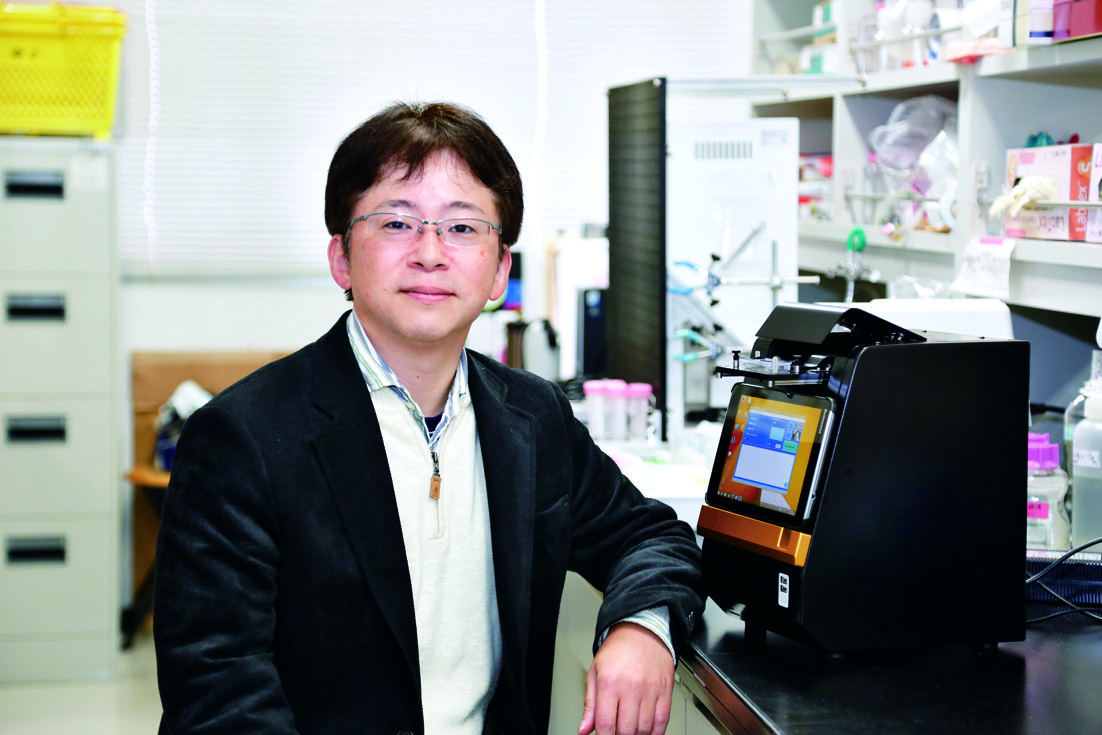
keynote speech
"The work of a researcher who continues to learn throughout his life."
Shin Hasegawa / Chair and Professor, Department of Frontier Biosciences, Hasehama University of Bio-Science and Technology
What image do you have of science researchers? Research work is an exciting and profound intellectual profession, with always something to learn in front of you. The style of research varies from person to person, and "how to conduct research" = "the researcher's personality. In this keynote lecture, I will introduce how I became a researcher, my training to become a researcher, and my current research efforts. I will also introduce a bit about my "research on chemical substances produced by bacteria in the environment," which developed from joint research with the biology club members of Osaka Meisei Junior and Senior High Schools. This is just one example of a "life of research," but we hope it will convey the appeal of research and provide a hint for those who participated in the Science Castle to consider their future career paths.
<プロフィール>
After graduating from the Department of Chemistry, Faculty of Science, Osaka University in 1993, he went on to graduate school and completed his doctorate in organic chemistry at the Graduate School of Science in 1999. In graduate school, I studied toxin proteins (peptides) produced by pathogenic bacteria. in 1999, I was a postdoctoral fellow at the Tokyo Institute of Technology, and in 2003, I was hired by the newly established Nagahama Institute of Bio-Science and Technology to establish a laboratory. in 2015, I was promoted to professor, where I have been working ever since. I have been working in two slightly different areas: bioengineering-like themes, such as rapid virus detection using optical technology, separation and analysis of microorganisms using thin-film filters, and analysis of airborne pathogens, and chemical biology, in which I search for potential future medicines from chemicals produced by microorganisms and other substances. I am working in two slightly different areas of research.
Workshop
The developer talks about the challenge of innovation that achieves both the effectiveness of the product while taking into consideration society and the global environment!
Partner: Rohto Pharmaceutical Co.
Booth Workshop
The day will come when you can talk to birds! The challenge of avian communication research!
Partner: Focus Systems Hirable, Inc.
Workshop for Teachers]
How will biotechnology change our lives?
Leave a Nest Co., Ltd.
*Pre-registration is accepted.
Workshop
The developer talks about the challenge of innovation that achieves both the effectiveness of the product while taking into consideration society and the global environment!
Partner: Rohto Pharmaceutical Co.
Venue:Planned Venue A
Implementation time: 16:05-16:55
Capacity: 20 persons
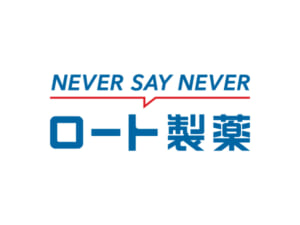
Rohto Pharmaceutical Co., Ltd. has developed and introduced a variety of products, including eye drops, to achieve people's health. This year's event will discuss the developers' thoughts, ideas, hardships, and other challenges through lectures by the developers of Nexsta, a new environmentally friendly sunscreen product.
Junior and senior high school students interested in the development of health-related products as well as the thoughts and ideas of those in charge, how they overcame the challenges, and the other side of corporate development are encouraged to attend.
Workshop for Teachers]
How will biotechnology change our lives?
Leave a Nest Co., Ltd.
Venue:Planned Venue B
Implementation time: 16:05-16:55
Applications will be accepted on a first-come, first-served basis from those who register in advance. If seats are still available, participants may join on the day of the event.
We will introduce the connection between advanced biotechnology and our daily lives, such as genome editing technology and bioplastics. We will also introduce teaching materials and science posters that can be used as themes for exploration and problem-based research.
List of Booth Projects
Booth exhibits of the following projects will be held at the poster venue.
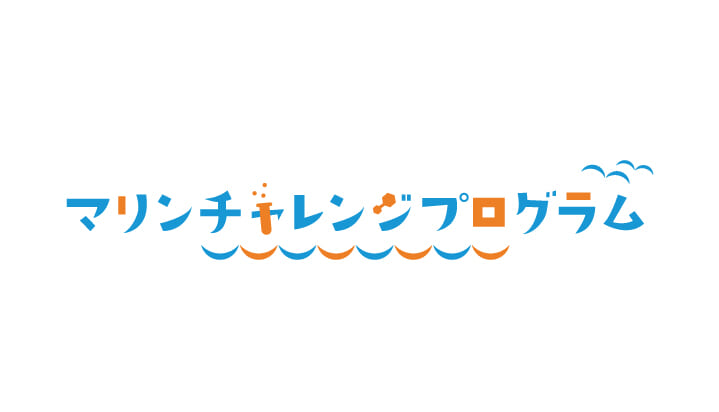
Challenge yourself to research the ocean and aquatic environment! Marine Challenge Program
The Nippon Foundation, JASTO, Liverness Inc.
The Marine Challenge Program is a program to support you who want to start research on the ocean and aquatic environment. At this booth, we will introduce past research themes, give advice on planning research themes, and introduce the Marine Challenge Program.
How will biotechnology change our lives?
Leave a Nest Co., Ltd.
We will introduce the connections between advanced biotechnology and our daily lives, such as genome editing technology and bioplastics. We will also introduce video clips, slides, and other teaching materials that can be used as themes for exploration and problem-based research. We are also looking for model schools to conduct classes!

The Challenge of Climate Change Adaptation: Thinking and Acting Together for the Future
Center for Climate Change Adaptation, National Institute for Environmental Studies
The workshop will provide participants with an opportunity to understand the essence of climate change issues by solving mysteries in a group work format, and to learn about the effects of climate change on the environment,
We will introduce educational materials and other resources that can foster the ability to think about measures (adaptive measures) that we can take in our immediate surroundings!
The National Institute for Environmental Studies also conducts biological seasonal monitoring in cooperation with citizen surveyors.
This program is designed to observe seasonal responses of living organisms, such as the blooming of plants and the first song of birds. Why not implement this program in school club activities?
Booth Workshop
The day will come when you can talk to birds! The challenge of avian communication research!
Focus Systems Hirable, Inc.
Enriching communication among all living thingsProject DolittleAs a part of the "Bird Communication" project, we provide special lectures by researchers and opportunities for research exchanges for junior and senior high school students who are engaged in research on avian communication. This year's event will not only introduce this initiative and the egg-shaped microphone array actually used in avian research, but will also invite visitors to submit ideas for bio-communication and other research related to living organisms. Junior and senior high school students who are interested in taking on the challenge of bio-communication research or who have a broad interest in biological research are welcome to stop by our booth.
Partner
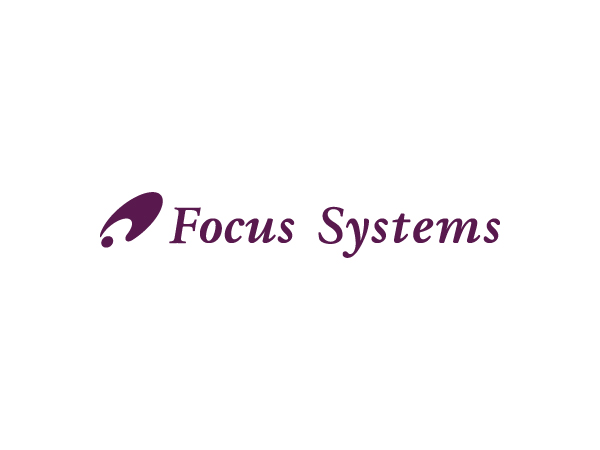
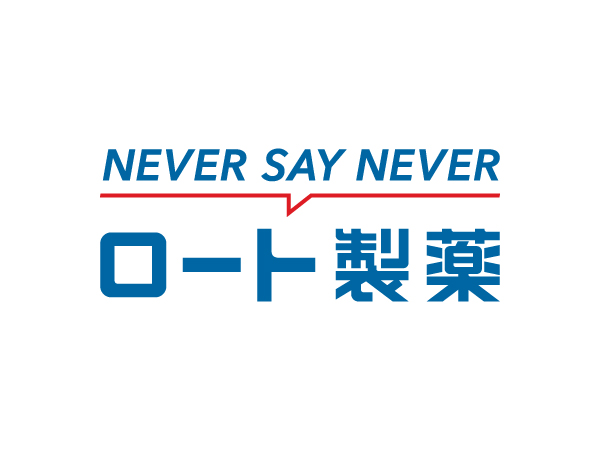
Otemon Gakuin University

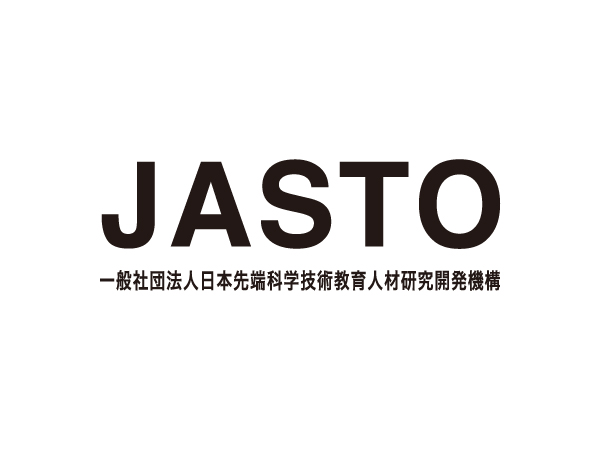
Organizing and planning
